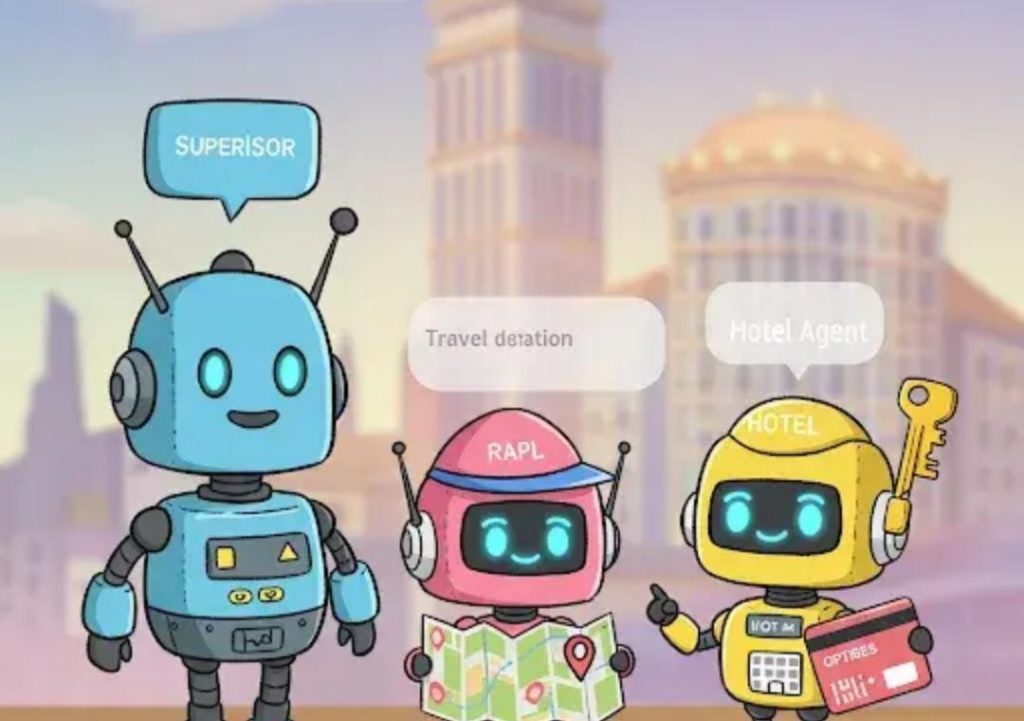
Multi-agent collaboration mimics real team dynamics
The era of single AI agents is slowly fading away, as we’re witnessing a surge in the development of multi-agent systems. These innovative systems allow multiple AI agents to work together, each specializing in different tasks, communicating effectively, and collaborating seamlessly. This modular approach is revolutionizing the way we build and deploy AI-powered solutions, as it mirrors human teamwork, but at machine speed and scale.
In this blog post, we’ll delve into the world of multi-agent collaboration, exploring its benefits, challenges, and real-world applications. We’ll also examine how this technology can be used to create digital workflows that are reminiscent of human teamwork, but with the added advantage of speed, scalability, and accuracy.
Why single AI agents are no longer enough
In the past, AI agents were designed to perform specific tasks, such as data processing, image recognition, or natural language processing. While these agents were effective in their respective domains, they often lacked the ability to adapt to changing circumstances or tackle complex, multi-faceted problems.
Single AI agents also suffered from another limitation: they were designed to work in isolation, without the ability to collaborate or communicate with other agents. This meant that they were unable to leverage each other’s strengths, share knowledge, or work together to achieve a common goal.
The power of multi-agent systems
Multi-agent systems, on the other hand, allow multiple AI agents to work together, each contributing their unique skills and expertise to the task at hand. This collaborative approach enables agents to:
- Specialize: Each agent can focus on a specific task or domain, allowing for greater depth and expertise.
- Communicate: Agents can share information, coordinate their efforts, and adapt to changing situations.
- Collaborate: Agents can work together to achieve common goals, leveraging each other’s strengths and compensating for each other’s weaknesses.
This modular approach to AI development has numerous benefits, including:
- Increased accuracy: By combining the strengths of multiple agents, the overall accuracy of the system can be significantly improved.
- Improved scalability: Multi-agent systems can be easily scaled up or down, depending on the requirements of the task at hand.
- Enhanced adaptability: Agents can adapt to changing circumstances, learn from each other, and refine their performance over time.
Real-world applications of multi-agent collaboration
Multi-agent systems have numerous real-world applications, including:
- Research and development: Multi-agent systems can be used to accelerate the research process, by allowing agents to collaborate on complex problems and share their findings.
- Validation and testing: Agents can work together to validate and test AI-powered systems, ensuring that they meet the required standards and are reliable in a variety of scenarios.
- Reporting and analysis: Multi-agent systems can be used to generate comprehensive reports and analyses, by combining the insights and findings of multiple agents.
Challenges and limitations
While multi-agent collaboration offers numerous benefits, it also presents several challenges and limitations, including:
- Complexity: Multi-agent systems can be complex and difficult to manage, requiring significant expertise and resources.
- Communication and coordination: Agents must be able to communicate effectively and coordinate their efforts, which can be challenging, especially in complex or dynamic environments.
- Scalability: While multi-agent systems can be scaled up, they can also be sensitive to the number of agents and the complexity of the task at hand.
Conclusion
Multi-agent collaboration is revolutionizing the world of AI development, by allowing different agents to specialize, communicate, and collaborate across tasks. This modular approach creates digital workflows that mirror human teamwork, but at machine speed and scale. While there are challenges and limitations to consider, the benefits of multi-agent collaboration are undeniable, and we can expect to see this technology play an increasingly important role in a wide range of industries and applications.
About the author
This blog post was written by [Your Name], a content writer at Growth Jockey. With a background in AI and machine learning, [Your Name] is passionate about exploring the latest developments in the field and sharing his knowledge with others.
Source



